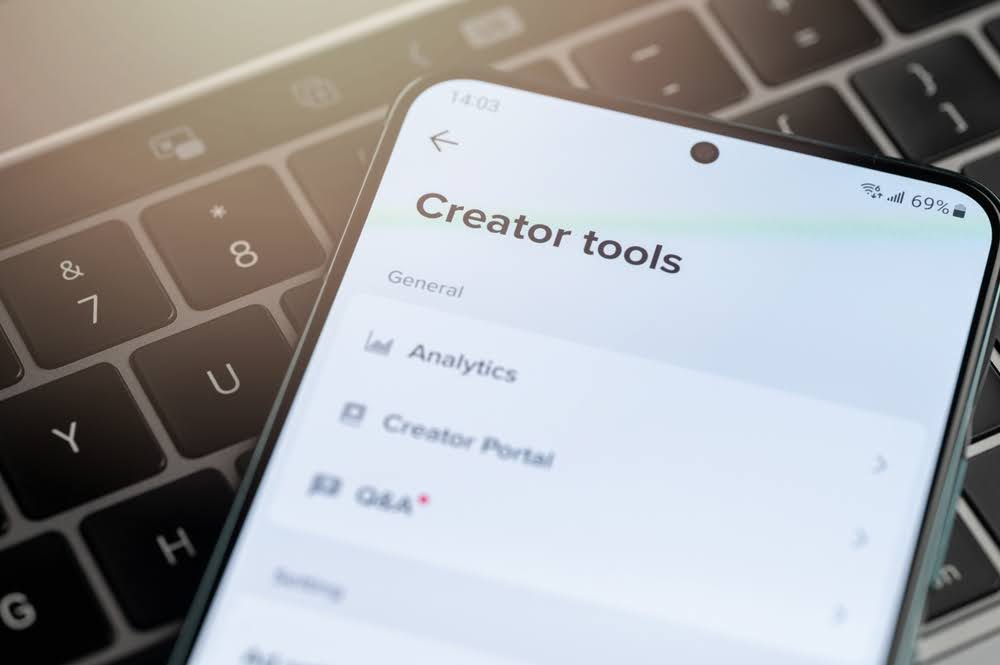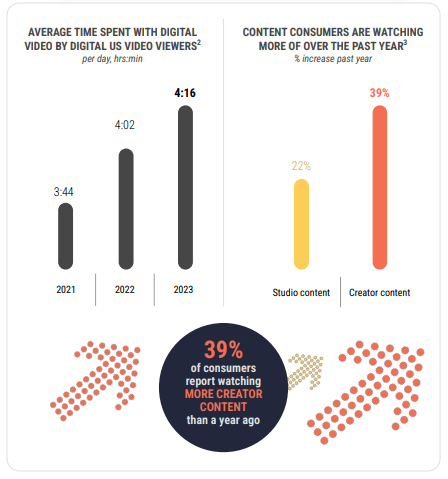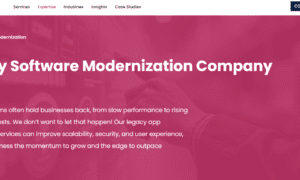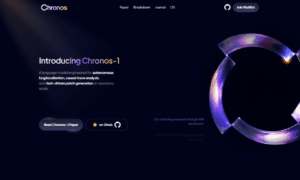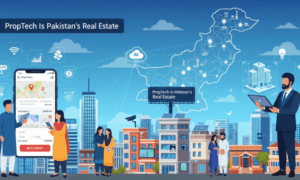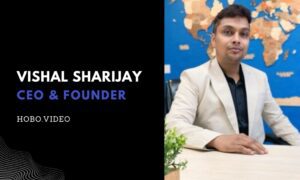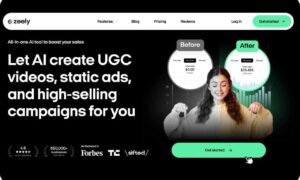When I started my career in technology, I never imagined that I would be given the responsibility of overseeing important projects for organizations that cater to millions of consumers. Still, here I am, writing about my experiences about how I enhance and improve technology—empowering the creators who drive the digital economy forward.
I am Harshit Sharan, a Senior Software Development Engineer and today, I will tell you how upgrading technology turned into a quest to create not only effective solutions but meaningful, personal experiences.
The Problem: How a Fragmented Experience Is Hindering Content Creators, Influencers and Affiliate Marketers
Over the years, I have observed many creators struggling with services that seem to undermine them. Rather than empowering creativity, these unintegrated systems produce blockers; requiring users to navigate a patchwork of tools that all have their quirks and limitations. It’s frustrating, unproductive, and unjust to the skilled people who are running the digital world.
The problem is that these scattered systems were not developed with the current content creator in mind. They have been developed haphazardly, brick by brick, and without any clear plan.
Here are the results I’ve observed:
- Bottlenecks in scalability
- Rising maintenance costs
- Lack of intelligent insights
- Inadequate personalization
- Glaring security gaps
For creators, this means spending more time solving problems and less time creating quality content. Industry research consistently highlights that many creators struggle with ineffective tools, making it one of their biggest challenges. Similarly, studies on user behavior suggest that fragmented systems often lead to higher user churn, emphasizing the need for modernization.
Beyond the impact on creators, businesses that still use traditional approaches also have different tasks to solve. Fragmentation slows down innovation, yet a modernized service brings key benefits:
- Accelerated feature delivery
- Additional revenue streams
The Numbers Don’t Lie: Why Modernizing Creator Programs Is Non-Negotiable
This isn’t just my perspective; the data backs it up. As a ProCreator report on improving user experience highlights,
“As companies scale, maintaining a seamless and intuitive user experience is crucial to retaining and attracting users. Without modernization, programs risk inefficiencies that hinder growth and engagement.”
That hits home for me because I’ve seen exactly how this plays out.
The creator economy is expanding rapidly, with its market size reaching $250 billion in 2023 and projected to grow to $480 billion by 2027. A report from the Interactive Advertising Bureau (IAB) emphasizes the need for services to modernize or risk being left behind.
Furthermore, a growing trend shows that 39% of consumers watch more creator content than a year ago, signaling a significant shift in content consumption.
For me, this isn’t about numbers; it’s the urgency. We must see that modernization isn’t an option anymore—it has become the primary direction for software development.
The Vision: A Centralized, Adaptable, and Secure Framework
My mission was ambitious: to redesign and redevelop the technology infrastructure of an affiliate program to its foundation. It wasn’t just about replacing one system for another; instead, it was about making a framework that would let people create without getting bogged down in the tools they’re using.
Key pillars of this transformation included:
- Modernizing the Technology Stack: Embracing serverless architectures, microservices, and federated solutions to improve on flexibility and scalability.
- Centralized Data Hosting: From unstructured and isolated data pockets to a coordinated, protected, and easily accessible setup.
- Improved Security: Applying the latest security measures to guard the data as well as meet various requirements of legal standards.
- Responsive and Cohesive Design: Designing for the mobile interface first by creating the best user experience across all devices.
- Enhanced Performance: Optimize latencies and eliminate bottlenecks to provide a seamless browsing experience at scale.
- Personalization and Experimentation: Seizing AI and ML to offer personalized experiences and facilitate quick changes with A/B testing.
As the creator economy grows, modernizing services to meet creators’ needs is increasingly vital.
My goal? Lead a team to build a framework that wasn’t just operational but thrived—minimize engineering burdens, improve speed, and let the content creators, influencers and affiliate marketers focus on quality content.
Challenges Along the Way
Of course, no transformation comes without its hurdles. The most significant problem I encountered was how to transfer the existing systems into new ones while serving live user traffic.
I also had to work with the challenge of having to merge several applications and tools to form one unified system. It was not only a matter of implementing technology but a matter of changing people, processes, and goals within different teams.
However, these challenges became opportunities. It made me think more innovatively and work in teams more effectively.
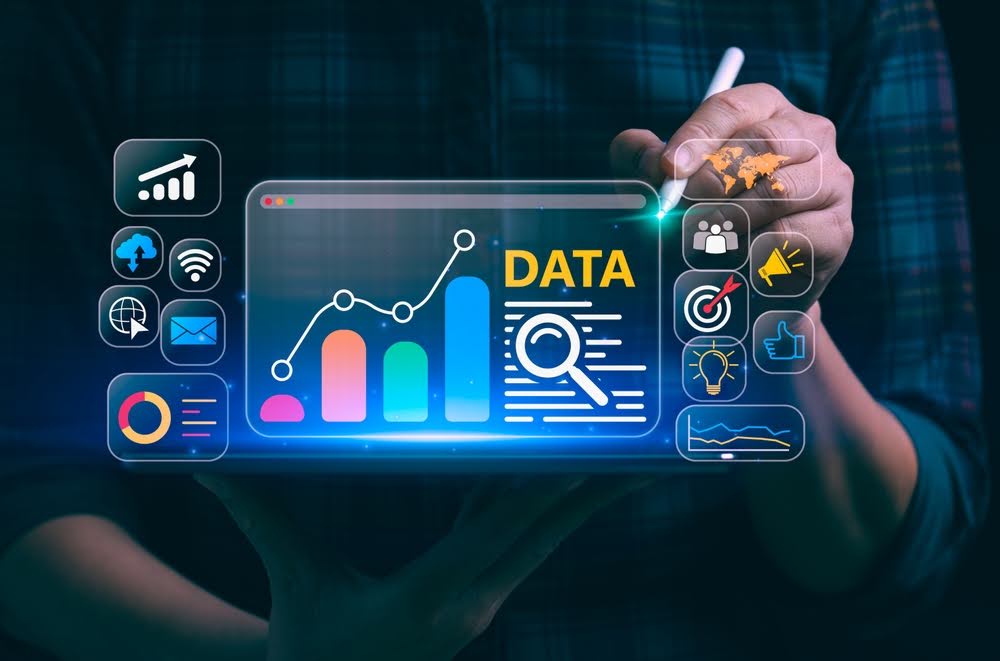
Photo: Shutterstock
The Results: Promoting Creators and Boosting Growth
For me, it has always been about creating solutions that can actually solve problems. When creators succeed, the whole community thrives. Through our efforts on scalability, security, and usability, we transformed the effectiveness of a widely user program.
The results are not just a list with concepts—it is a list of specific improvements that have taken place. Here’s what this transformation has accomplished so far:
- Modular and scalable software architecture provides a low downtime and improved system availability.
- Security enhancements allow creators to work securely and share their material while generating revenue.
- Simplified and performant interfaces don’t distract the users from the actual content creation.
- New ways of personalization help to reach the target audience in a better manner.
Additionally, a successful affiliate marketing strategy plays a key role in driving growth. Captiv8’s report notes that businesses can improve performance through data-driven decisions and strong partnerships. When executed correctly, affiliate marketing softwares boosts revenue streams, streamlines workflows, and strengthens relationships with creators, ultimately enhancing program success.
Basically, we have taken the thing and made it organized, easy to use, and a liberating experience.
Lessons Learned
If you’re tasked with modernizing a technology system—whether it’s for creators, consumers, or enterprises—here are a few lessons from our journey that might help:
1) Start with the User: It is always valuable to understand what your end users need and their aspirations.
2) Invest in Modular Architecture: These aspects cannot be perceived as the amenities in the present and current rapidly changing digital environment.
3) Prioritize Security: Trust, we can say, is the backbone of any good service since people’s information and data are involved. No strong security precautions equate to a downfall.
4) Embrace Collaboration: Demobilize and create cooperation across departments. The best ideas are most likely to come from the combination of ideas from different people.
5) Think Long-Term: It is crucial not to lose sight of the future. Develop systems that can evolve as your users evolve and add new requirements.
Looking Ahead: Creator Programs in the Future
As I reflect on this journey, I’m reminded of why I entered the tech industry in the first place: it is for the purpose of dealing with real problems and enhancing the well-being of other people. Despite all the progress we’ve made with an affiliate program, there is still so much that can be done, starting from the content optimization with the help of AI and automation in the content creation workflow.
Insights from NeoReach’s Creator Economy Trends report underscore how the growing competition among services like Twitch, YouTube, TikTok, and Kick reflects the dynamic nature of creator-brand partnerships. The report highlights that automation, AI-driven personalization, and deeper, data-backed collaborations are becoming essential components in developing scalable and competitive creator programs.
If you’re a creator or part of a team building for creators, my advice is simple: don’t settle. And if you’re creating those services, understand this as fact—you have the ability to reshape not only the technological landscape but also lives.
As the creator economy keeps expanding, it will prosper as a business sector. Cutting-edge technologies and innovations are essential for programs because they reveal vast development opportunities across all key sectors, including creators, technology professionals, and businesses.
About the Author
I’m Harshit Sharan, a Senior Software Development Engineer at Amazon with a decade of experience designing and optimizing marketing technology systems. My passion lies in creating scalable, user-centric services that empower creators and drive business growth. When I’m not deep in code or architecture diagrams, I’m likely mentoring engineers or exploring ways to integrate AI and ML into personalized digital experiences.
For more insights or to collaborate, feel free to connect with me on LinkedIn or reach out via email at hsincredible@gmail.com.
Resources:
- Bagree, P. (2023, November 28). 8 ways to improve user experience for growth. ProCreator. https://procreator.design/blog/improve-user-experience-scaling-product/
- Captiv8. (2023, November 28). Top 10 Affiliate Marketing Stats of 2023. Captiv8. https://captiv8.io/blog/2023/11/28/top-10-affiliate-marketing-stats-of-2023/
- Coherent Market Insights. (2023, December 13). Global Creator Economy Market to Reach $528.39 Billion by 2033 at 22.5% CAGR. GlobeNewswire. https://www.globenewswire.com/news-release/2023/12/13/2795442/0/en/Global-Creator-Economy-Market-to-Reach-528-39-Billion-by-2033-at-22-5-CAGR-Coherent-Market-Insights.html
- Entis, O., (2023, June). Churn Analytics 2023 Edition: Use the AI Magic. Staircase.AI. https://staircase.ai/learn/customer-churn-prediction/churn-analytics-2023-edition-use-the-ai-magic
- IAB. (2023, December). Creator Economy Report 2023. IAB TalkShoppe. https://www.iab.com/wp-content/uploads/2023/12/IAB-TalkShoppe-Creator-Economy-Report-2023.pdf
- Jaeger, L. and Grant, J., (2023, July). Streaming services in 2023 and key global trends. Simon-Kucher & Partners. https://www.simon-kucher.com/en/insights/streaming-slowdown-making-players-rethink-offerings-prevent-subscription-churn
- NeoReach. (2023, December) Breaking Down the Best Creator Economy Trends in 2023. NeoReach. https://neoreach.com/creator-economy-trends-in-2023
- Ribeiro, H., Barbosa, B., Moreira, A.C., et al., (2023, February). Determinants of churn in telecommunication services: A systematic literature review. Management Review Quarterly, 74, pp.1327–1364. https://link.springer.com/article/10.1007/s11301-023-00335-7

